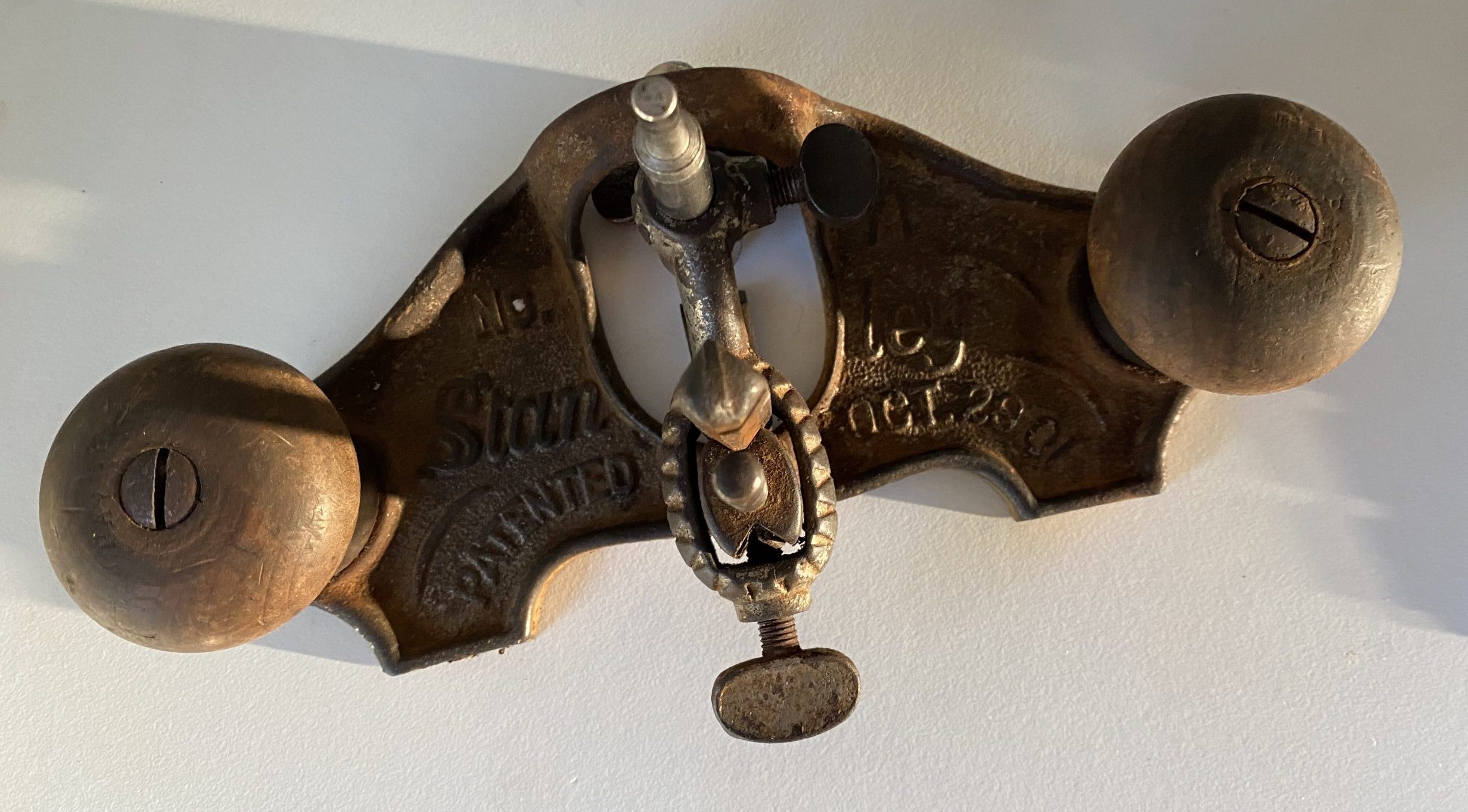
I recently acquired a Stanley 71 router plane which was in a sorry state, covered in rust and missing its depth adjustment nut.
The plane was so rusted that dismantling it produced small piles of rust, but all the pieces were structurally sound. The most corroded pieces are the screws for the knobs, but even they are still usable.
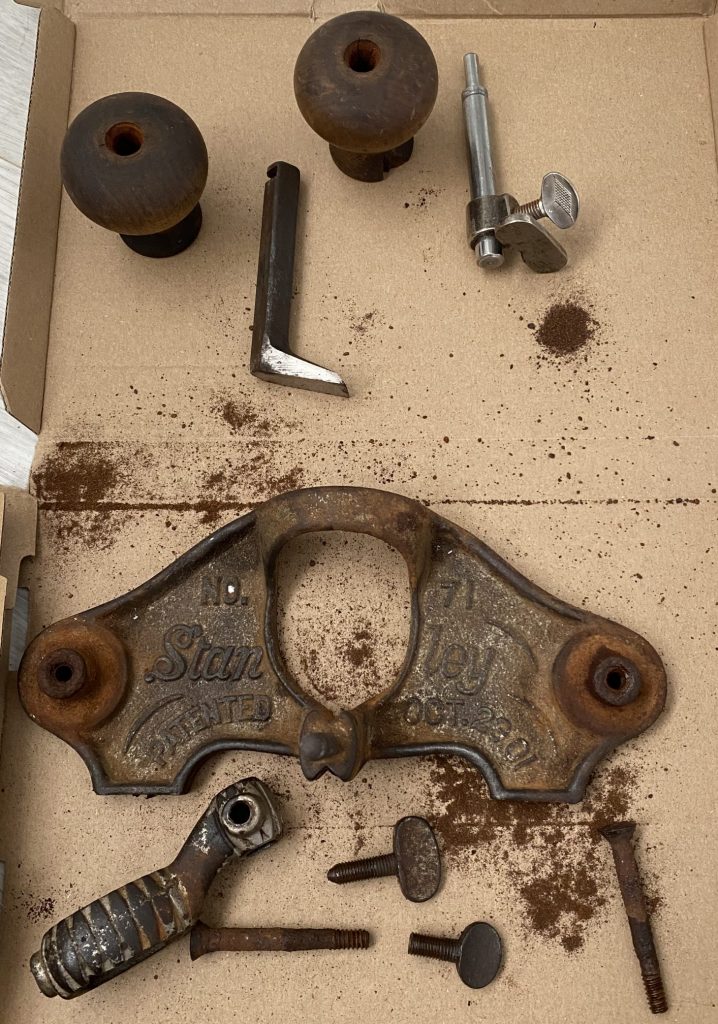
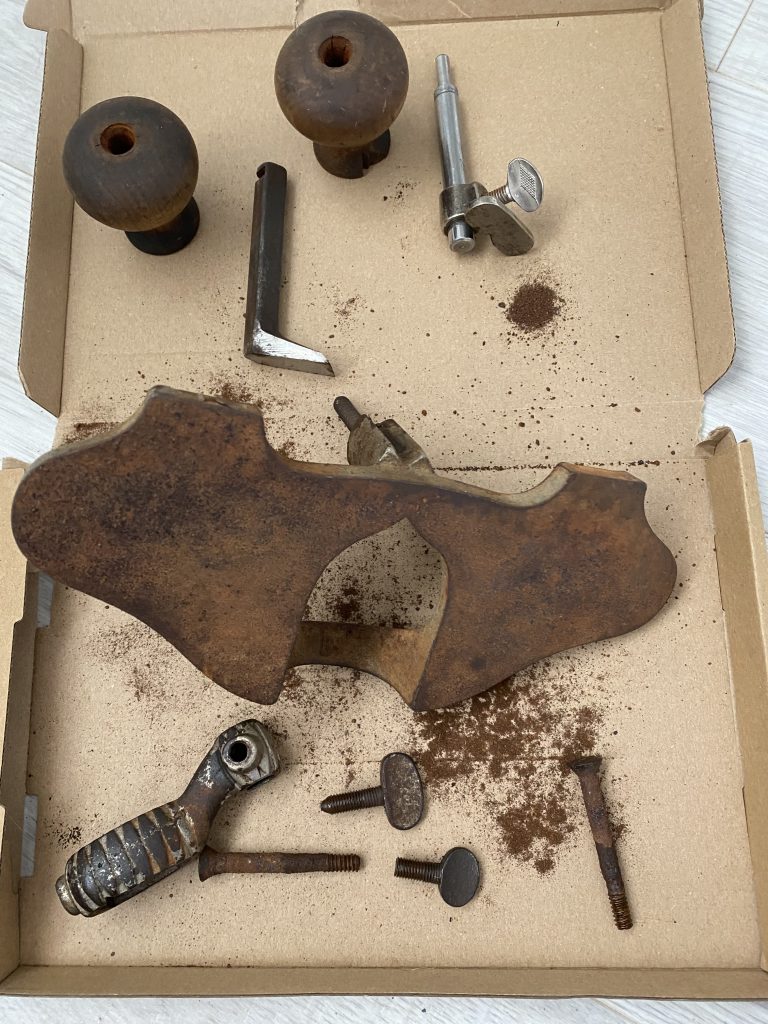
Normally, I use wire wool to clean planes, but in this case, I decided to try citric acid as the screw threads were rusty and would be difficult to clean.
The plane was placed in a mild dilution of citric acid and checked regularly to see how it was progressing. Overall, it took about 12 hours for the rust to be removed. The acid did a brilliant job removing the rust without damaging the remnants of the original finish.
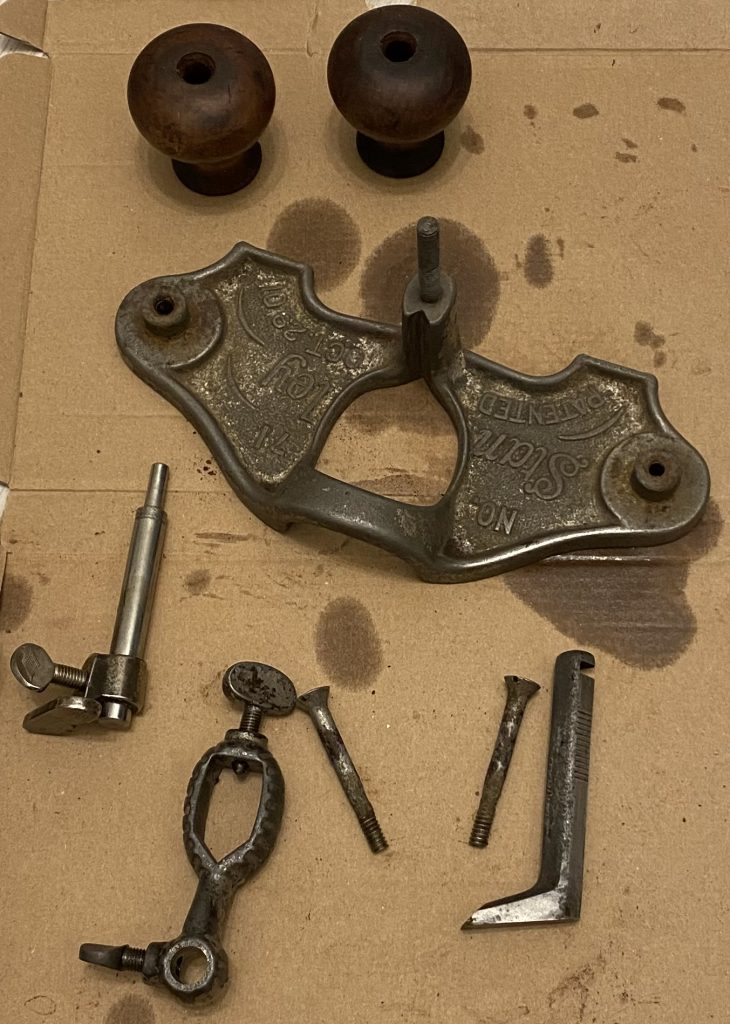
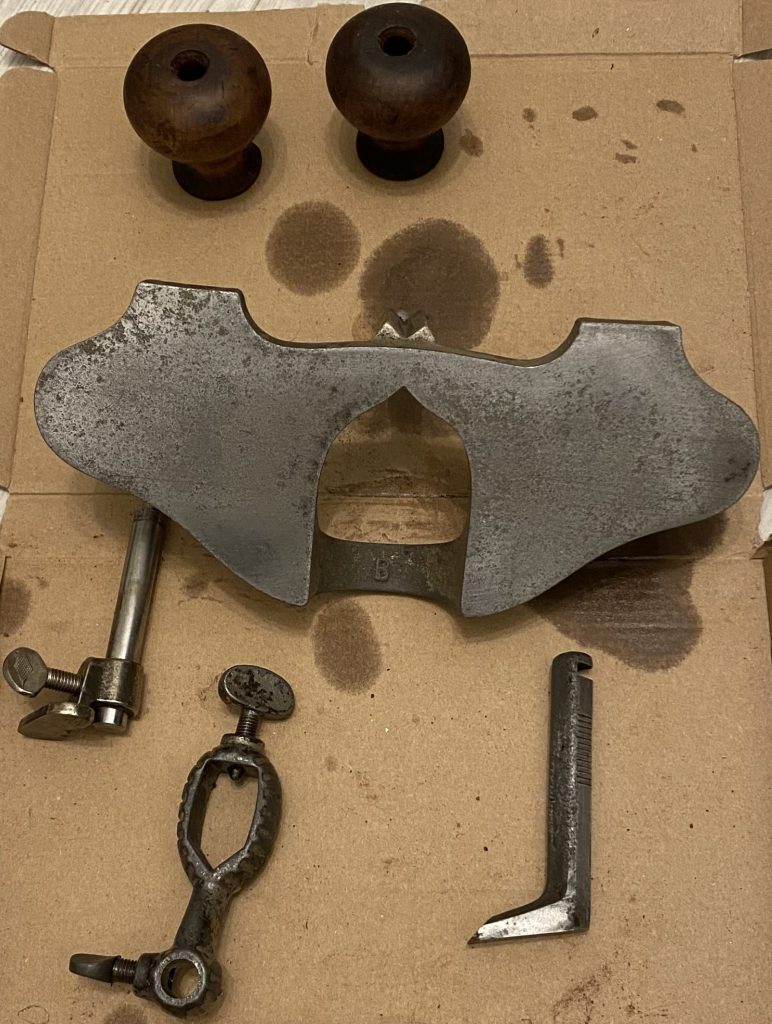
Citric acid can be harsh, but I think it was a good choice for this. Evapo-Rust would be a better choice if you can get it.
Next, the sole of the plane was checked for flatness using feeler gauges and a straightedge. The sole on this plane is convex.
Using sandpaper on a flat surface to flatten a plane sole is not great at removing convexity and can even cause it! To prevent making the convexity worse, the centre of the sole was targeted more than the edges and the progress was regularly checked.
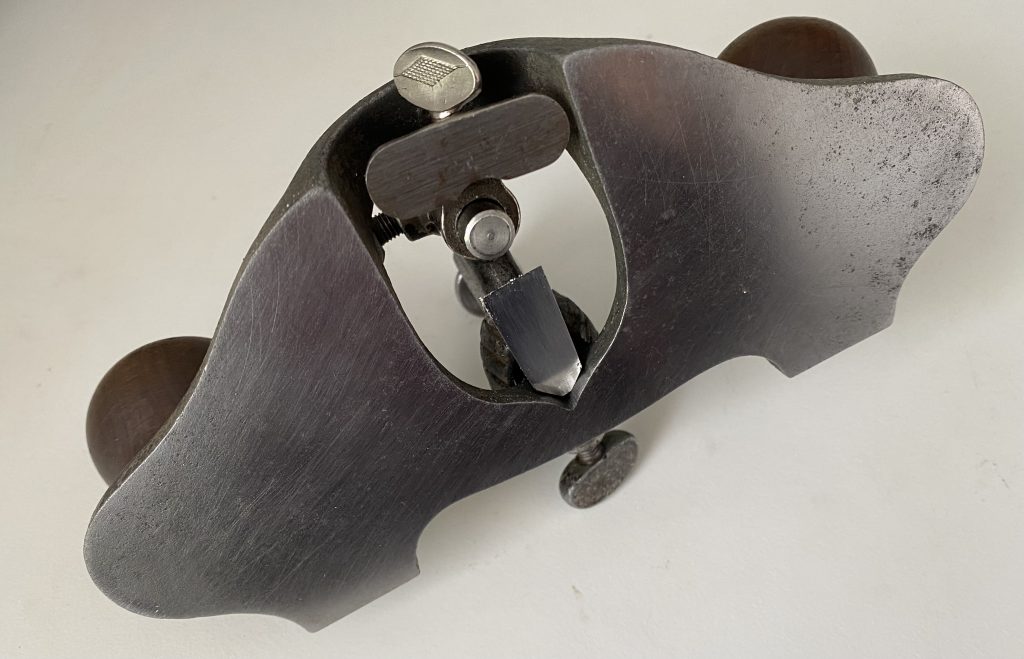
The router is now free of rust, flat, and looking a lot better.
Making a new depth adjustment thumbnut
The missing depth adjustment nut was the final issue with the plane. The thread used on the depth adjustment rod, like a lot of threads used on Stanley planes, appears to be an uncommon size.
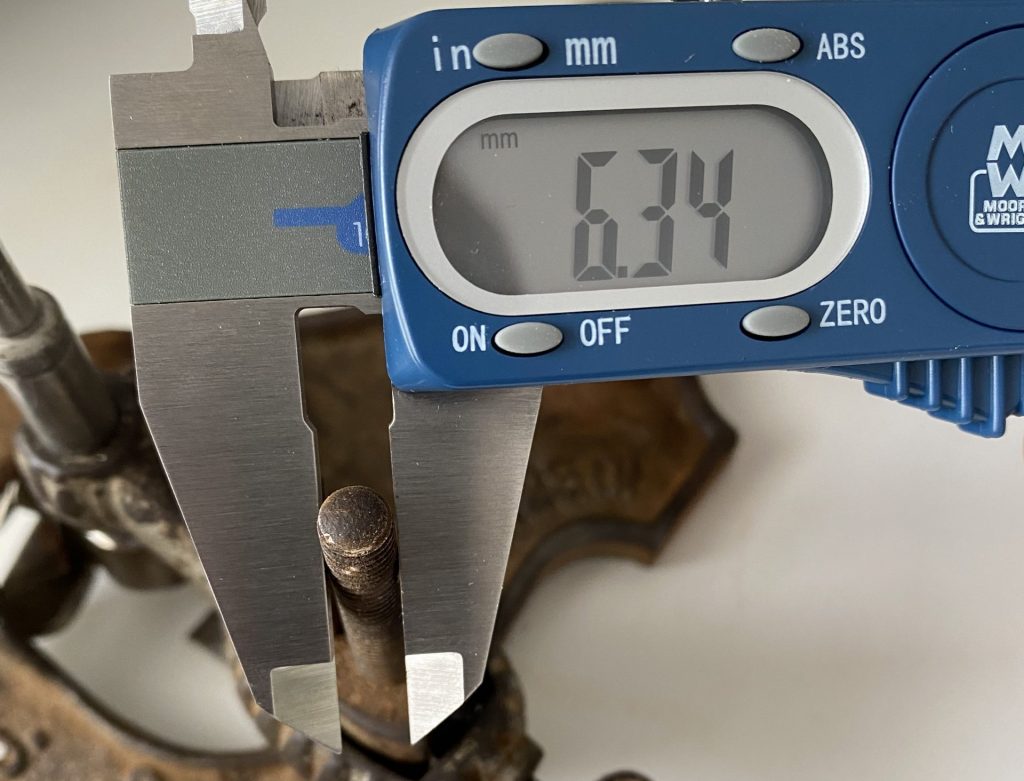
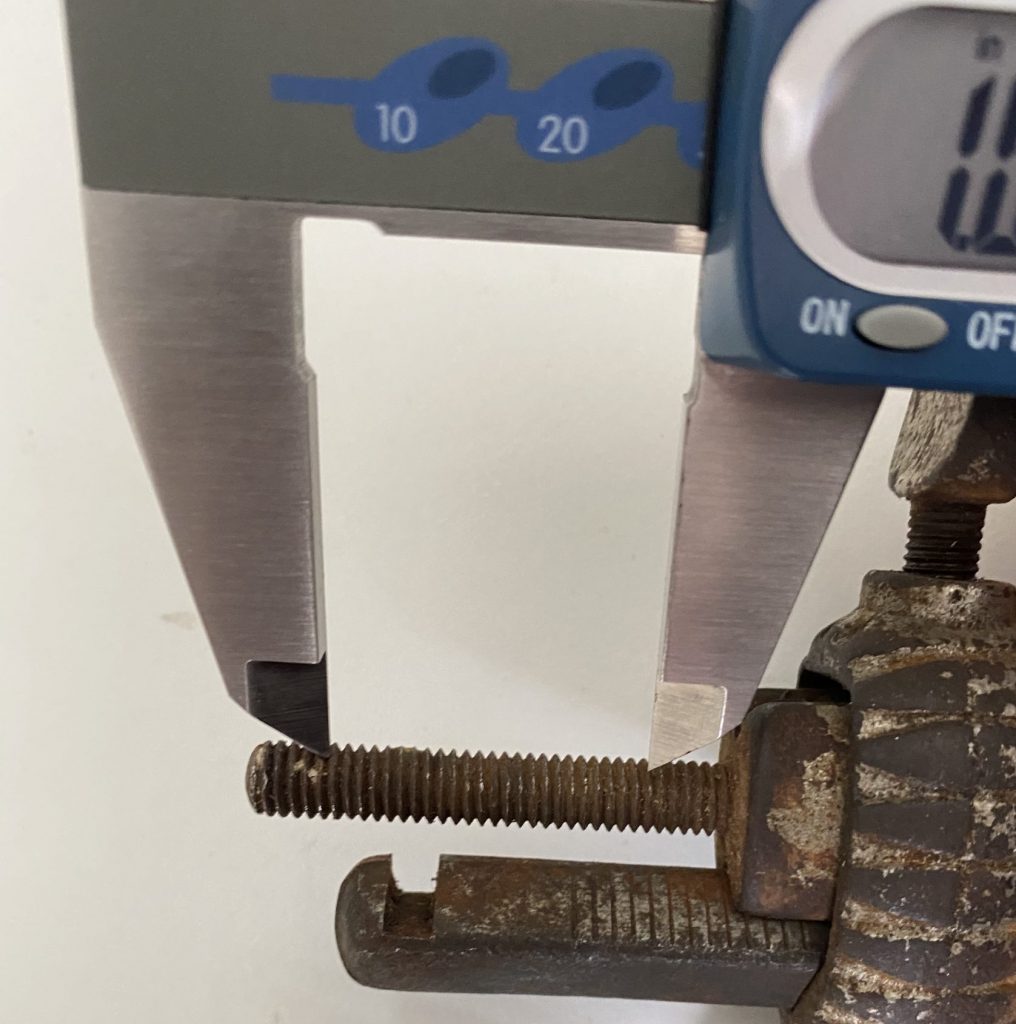
The diameter is 1/4″ (6.35 mm) with what looks like 24 TPI (threads per inch), making it 1/4″ x 24 TPI.
The closest standardised threads are 1/4″ x 24 TPI UNS or 1/4″ x 24 TPI Whitform. There’s not a big difference between the two, and they should be close enough that either will work. If the wrong one is chosen the nut should still work but may be a bit tight or loose depending.
Stanley did use some Whitworth threads on their planes, so I went with the Whitform thread.
To make the adjustment nut, the centre hole of an M5 knurled thumb nut was enlarged with a 5.35 mm drill bit and then tapped. M5 is the closest metric size below 1/4″.
The thumb nut was slightly too thick for the cutter but a bit of filing fixed that.
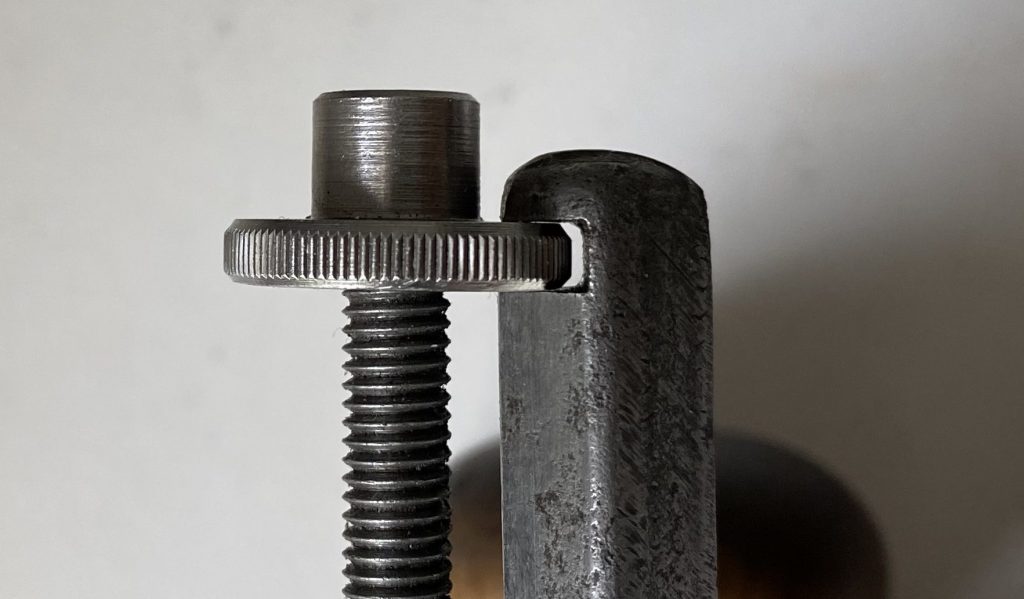
The result is a thumbnut with a snug fit to the cutter. It doesn’t need to be a snug fit to the cutter so it may be worth filing down a bit, but it works fine. It would be interesting to know the thickness of an original thumbnut.
The new nut is a tiny bit stiff on the threaded rod, which could mean it is UNC rather than Whitform, or it could be due to rust. A less rusted plane would be needed to find out for sure.
If anyone knows for certain what size thread it is, please leave a comment!
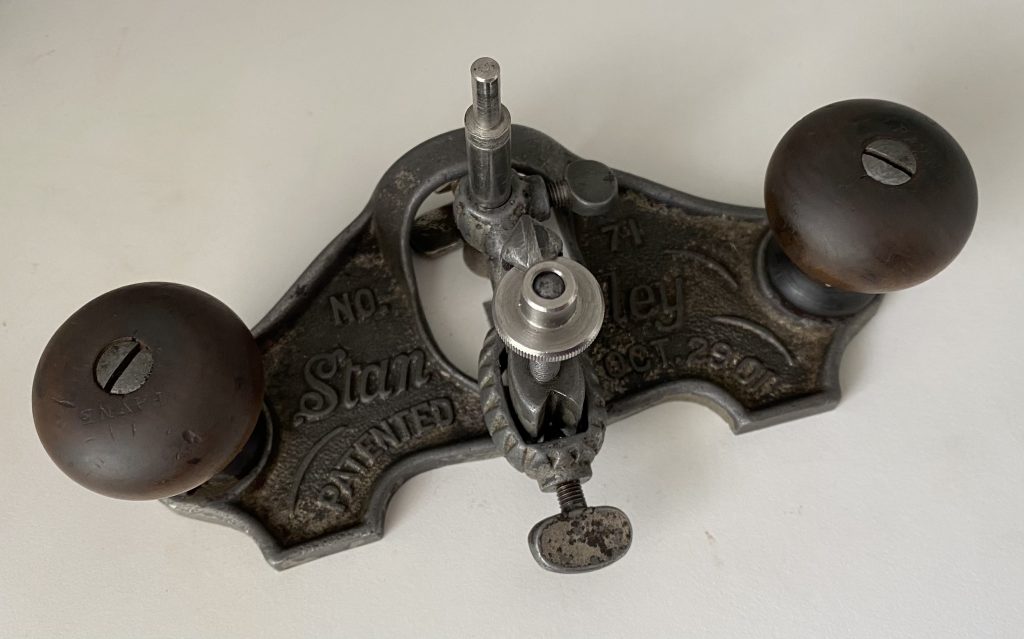
The finished plane is clean, free of rust and works well.
Leave a Reply